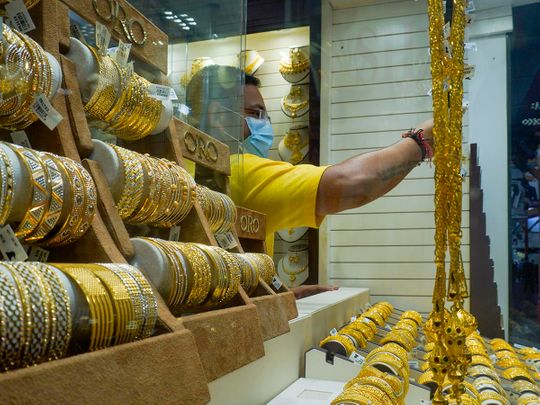
Dubai: 2020 wasn’t such a horrific year for gold shoppers after all.
After enduring the worst of the COVID-19 outbreak and the economic uncertainties that came with it, shoppers worldwide were making up for lost time in the final three months of last year. It would seem that they were also adjusting to gold prices’ elevated levels.
“We have seen in Q4 quite a significant recovery in the jewellery markets – in India, China and elsewhere,” said John Mulligan, Head of Member and Market relations at World Gold Council, headquartered in London.
“In India, fourth quarter demand was down 8 per cent from 2019, but that’s still a turnaround when you look at the full-year trend, which shows 42 per cent down. In China, the recovery that’s happening is more recent.
“Yes, some of the recovery is very much the early stages. But wherever we have seen reduced restrictions (related to COVID-19) and reasons for consumer confidence, gold is getting bought.”
The global gold markets will take any signs – and talk – of recovery as a huge positive in itself. Because most of 2020 was about uncertainties piling up and shoppers staying well away. But for global wealth funds, gold was the best asset to get in… and hold on to.
"It's too early days to say whether this can be sustained," said John Mulligan of WGC. "The numbers are still below historical averages."
Only prices were higher
Even as prices shot up more than 25 per cent – and hitting an all-time record of $2,067 an ounce – worldwide jewellery demand was down 34 per cent to 1.41 tonnes, according to WGC. Overall demand for gold dipped by 14 per cent to 3.75 tonnes.
All the buying – or most of it – was being done by funds, whose exposure in the yellow metal was up 120 per cent to 877.1 tonnes. That’s been changing in recent weeks, which explains why shoppers are making a comeback.
Helping demand return
The most important element is gold dropping from plus $2,000 an ounce levels to the $1,830-$1,850 range. Once shoppers saw prices were relatively stable at around this mark, they wanted to get back in.
“These may be elevated levels historically, but markets (and consumers) have got used to it,” said Mulligan. “The investment market in gold is not just about ETF (exchange traded funds), but also about demand for bars and coins. That’s proving to be the case now in a lot of markets – Europeans have come back in real force, China was 33 per cent up.”
First-timers
When in doubt, go for gold. The COVID year did enough to firmly entrench the metal as everyone’s favourite. But did gold do enough to bring in first-timers to it?
“When have seen similar systemic risks in the past, we have seen a broadening of the investor base,” said Mulligan. “We saw that in 2009-10.
“Now, when we talk to bullion banks, they see very strong intra-bank trading, strong futures trading, and the private investor base will be strong too.”








